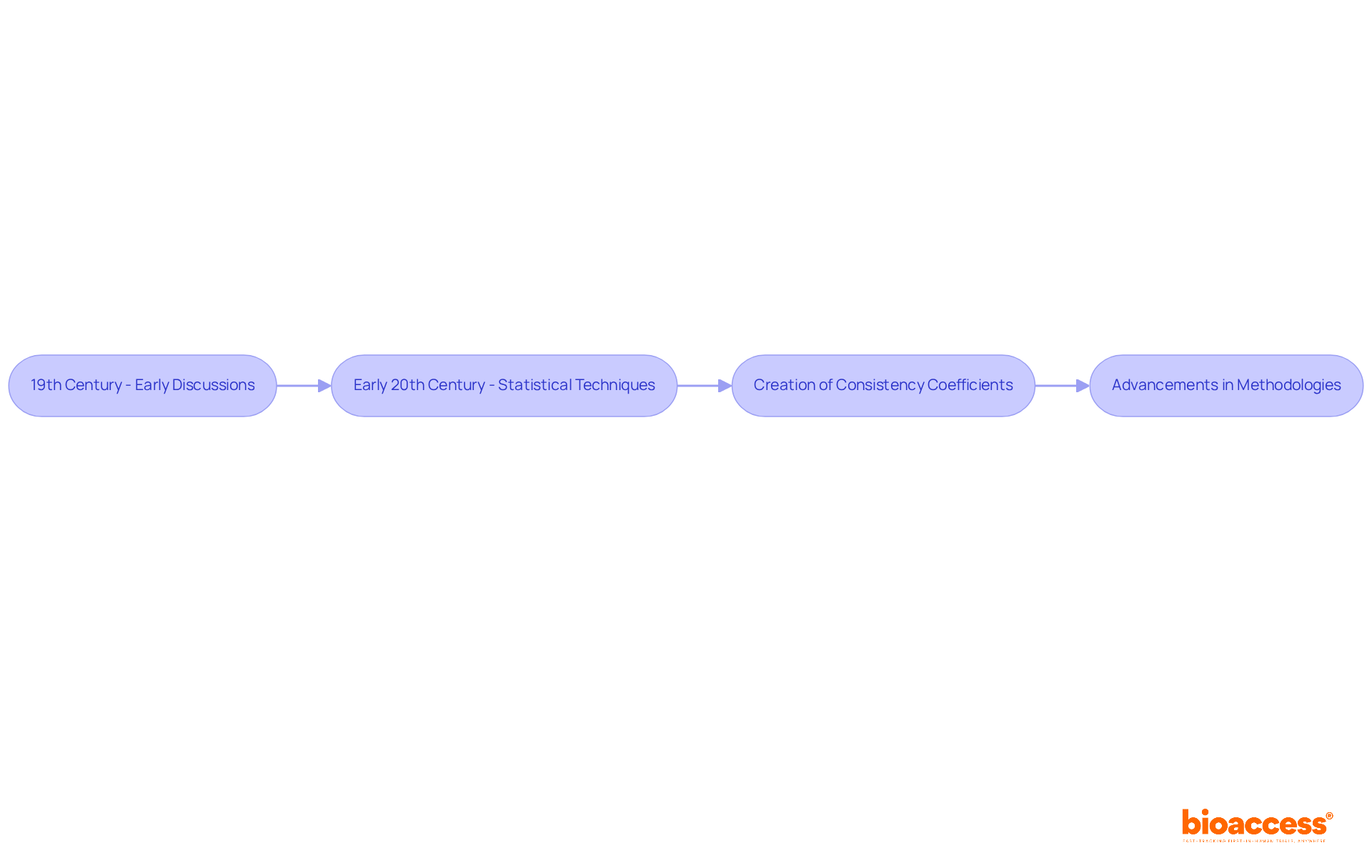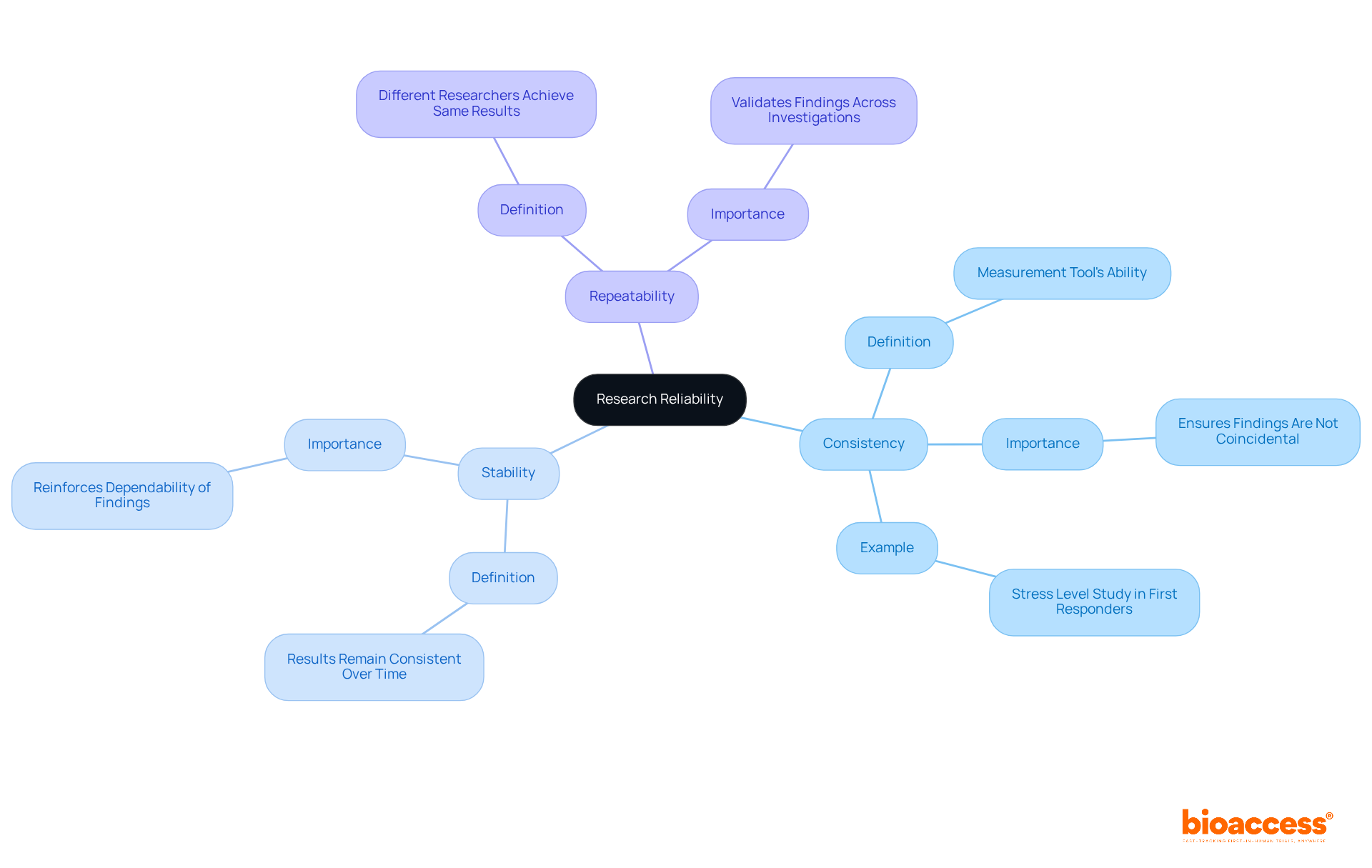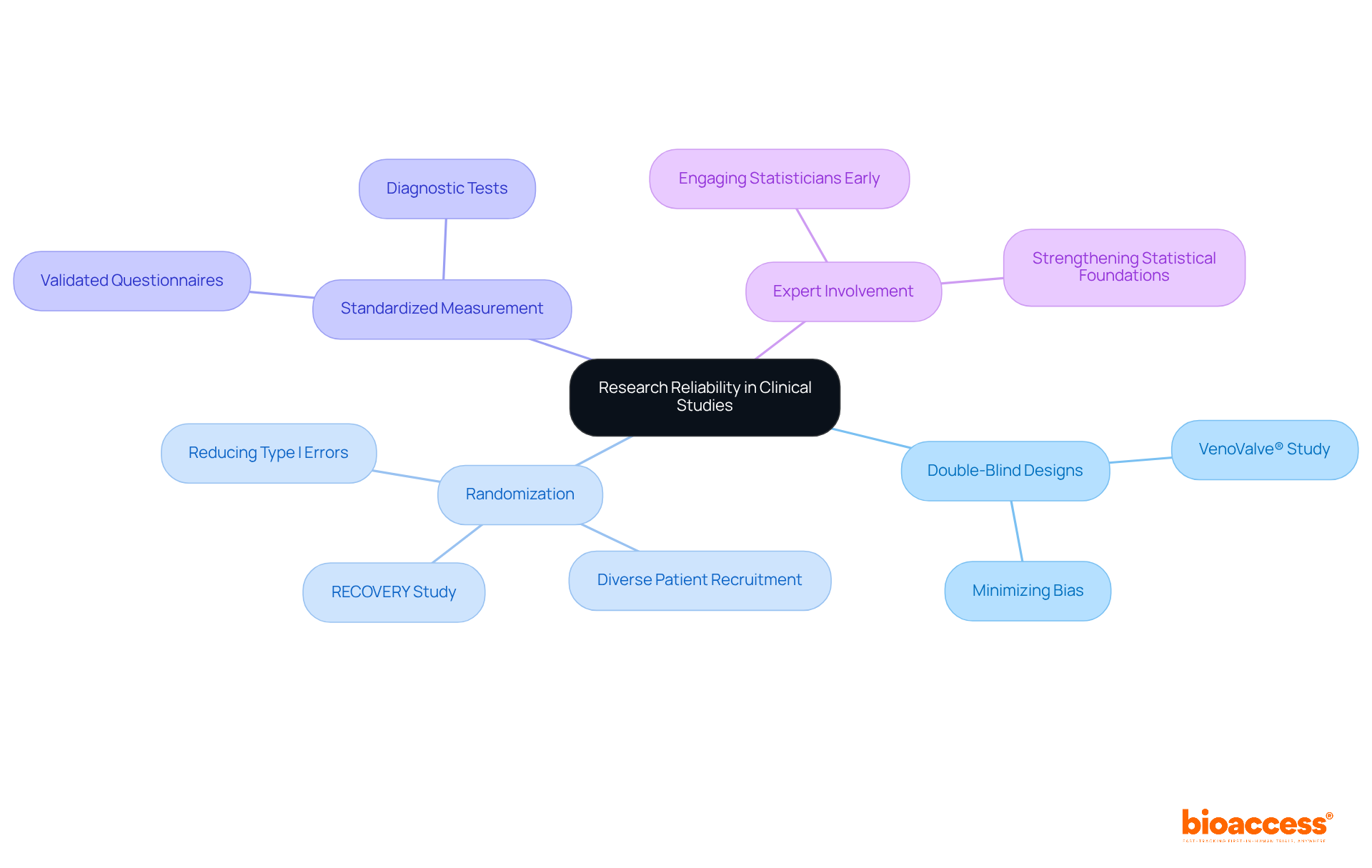


Research reliability is paramount in clinical studies, signifying the consistency and stability of measurements, which is essential for achieving valid and dependable outcomes, particularly in medical research. Reliable research methods, including robust randomization techniques and double-blind designs, play a critical role in minimizing bias and enhancing the credibility of findings. This reliability ultimately influences patient care and propels the advancement of medical therapies. Therefore, understanding and implementing these methodologies is not just beneficial but necessary for the integrity of clinical research.
Understanding research reliability is essential for ensuring the integrity and applicability of scientific studies, particularly in fields like medicine where patient outcomes are at stake. This article delves into the critical characteristics that define research reliability, emphasizing how consistent and stable measurements can significantly influence study results and the development of effective therapies.
However, as the landscape of research evolves, researchers face challenges in maintaining reliability. What obstacles exist, and how can they be overcome to ensure the validity of their findings?
Understanding what is research reliability involves recognizing that the dependability of a study is marked by the consistency and stability of measurements acquired through investigation, reflecting the extent to which methods yield similar outcomes when repeated under comparable circumstances. In medical studies, understanding what is research reliability is crucial, as patient safety and treatment effectiveness are paramount. For instance, robust randomization methods are vital for ensuring dependable and valid study outcomes, as they eliminate selection bias and guarantee comparability among treatment groups. This methodological rigor empowers researchers to confidently extend findings to larger populations, thereby enhancing the relevance of results for medical practice.
The significance of dependable findings is underscored by recent publications, such as the Reporting of Setting in Psychedelic Clinical Trials (ReSPCT) Guidelines, which emphasize the necessity of uniform reporting across trials. Inconsistent reporting can result in the rejection of promising therapies, as illustrated by the U.S. Food and Drug Administration's decision regarding MDMA-assisted therapy for PTSD. This highlights what is research reliability and how it directly affects healthcare study results and the advancement of medical therapies.
Moreover, case studies illustrate the importance of dependability in medical investigations. For example, the application of randomization techniques tailored to specific trial needs has been shown to enhance participant distribution and increase the likelihood of favorable outcomes. Such adaptability not only fortifies the reliability of findings but also upholds ethical integrity in trials.
In conclusion, trustworthy studies are crucial for understanding what is research reliability, as they form the backbone of scientific inquiry, enabling the validation of results and fostering confidence in the conclusions drawn from data. Organizations like bioaccess® exemplify this commitment to trustworthiness by streamlining ethical approval procedures and ensuring adherence to rigorous standards, ultimately facilitating quicker and more efficient clinical studies.

The evolution of research trustworthiness has undergone significant transformation since its early conceptualization. Initial discussions can be traced back to the 19th century, focusing on psychometrics and measurement theory, which established the foundation for comprehending consistency. The emergence of statistical techniques in the early 20th century signified a crucial moment, resulting in the creation of several consistency coefficients, including Cronbach's alpha, which measures internal coherence. As medical studies advanced, the focus on what is research reliability heightened, driven by the need for consistent and reproducible outcomes. This historical trajectory underscores a sustained commitment to enhancing research quality by understanding what is research reliability through rigorous assessments.
Notably, advancements in methodologies, such as randomization, have emerged as critical components in clinical trials, effectively minimizing selection bias and ensuring comparability among treatment groups. These developments not only bolster the integrity of study outcomes but also facilitate diverse participant recruitment, ultimately leading to findings that resonate with real-world applications. The continuous development of trustworthiness concepts highlights their crucial role in enhancing medical knowledge and refining healthcare practices.

Essential traits of study dependability—consistency, stability, and repeatability—are foundational in understanding what is research reliability in clinical research. Consistency refers to a measurement tool's ability to yield similar results across different instances, ensuring that findings are not merely coincidental. Stability signifies that results remain consistent over time when identical conditions are applied, reinforcing the dependability of the findings. Repeatability highlights that different researchers can achieve the same results using identical methods, which is crucial for validating findings across various investigations.
These attributes are especially vital in clinical studies, where variations in results can significantly affect patient care and treatment protocols. For instance, a study measuring stress levels in first responders demonstrated high reliability by employing the same assessment tool at different intervals, yielding consistent scores. Such examples underscore the importance of upholding strict standards in study design to enhance the credibility and applicability of results.
Furthermore, emphasizing these traits from the outset of study design builds confidence among stakeholders and enhances the overall integrity of trials. As highlighted in numerous studies, understanding what is research reliability is essential, as it ensures high dependability that not only bolsters the validity of investigations but also contributes to the advancement of medical knowledge and improved patient outcomes.

Practical examples of research dependability are prominently illustrated in clinical trials evaluating new medications or medical devices. A notable approach is the implementation of double-blind designs, which effectively minimize bias by ensuring that neither participants nor researchers know who receives the treatment versus a placebo. This method significantly improves the trustworthiness of results by reducing subjective influences that could distort data interpretation. Moreover, research has demonstrated that trials utilizing randomization can substantially decrease bias and diminish the likelihood of type I errors, highlighting the significance of stringent methodologies in generating trustworthy results.
For instance, Dr. Jorge Hernando Ulloa presented one-year first-in-human data on the VenoValve® at the Charing Cross International Symposium, showcasing advancements in vascular medicine that rely on such rigorous methodologies. Furthermore, the RECOVERY study shows how randomization not only boosts recruitment efforts but also draws diverse patient groups, further improving the credibility of clinical findings. The application of standardized measurement instruments, like validated questionnaires and diagnostic tests, strengthens the consistency and dependability of the gathered data.
Involving statisticians early in the study design phase enhances the statistical underpinnings, ensuring that the trials meet the highest benchmarks of trustworthiness and validity. As Vance W. Berger observed, tests founded on randomization act as strong substitutes for conventional likelihood-based tests, emphasizing the essential function of randomization as a regulatory necessity in improving the credibility of studies. Moreover, bioaccess® exemplifies expertise in managing clinical trials in Latin America, focusing on Early-Feasibility, First-In-Human, Pilot, Pivotal, and Post-Market Follow-Up Studies, which are essential for understanding what is research reliability in ensuring accurate outcomes.

Understanding research reliability is fundamental to ensuring the integrity and usefulness of scientific studies. It emphasizes the necessity for consistent and stable measurement techniques that yield reliable results across various contexts. This reliability is particularly vital in medical research, where the stakes involve patient safety and treatment efficacy, underscoring the need for rigorous methodologies that can be trusted to produce valid outcomes.
Throughout the article, key points highlight:
The discussion of methodologies like randomization and double-blind designs illustrates how these practices enhance the credibility of research findings, ultimately fostering trust in the results that inform healthcare practices.
The significance of research reliability extends beyond academia; it has profound implications for medical advancements and patient care. As the landscape of clinical research continues to evolve, prioritizing robust reliability standards will be crucial in shaping future studies. Embracing these principles not only strengthens the validity of research but also contributes to the broader goal of improving healthcare outcomes. Stakeholders in the research community are encouraged to adopt rigorous practices that ensure reliability, thereby enhancing the overall quality and impact of scientific inquiry.
What is research reliability?
Research reliability refers to the dependability of a study, characterized by the consistency and stability of measurements obtained through investigation. It indicates the extent to which methods yield similar outcomes when repeated under comparable circumstances.
Why is research reliability important in medical studies?
Research reliability is crucial in medical studies because it directly impacts patient safety and treatment effectiveness. Reliable findings enable researchers to confidently extend results to larger populations, enhancing the relevance of outcomes for medical practice.
How do robust randomization methods contribute to research reliability?
Robust randomization methods help ensure dependable and valid study outcomes by eliminating selection bias and guaranteeing comparability among treatment groups, which is essential for reliable research findings.
What are the consequences of inconsistent reporting in medical research?
Inconsistent reporting can lead to the rejection of promising therapies, as demonstrated by the U.S. Food and Drug Administration's decision regarding MDMA-assisted therapy for PTSD. This highlights the impact of research reliability on healthcare study results and the advancement of medical therapies.
How do case studies illustrate the importance of research reliability?
Case studies show that applying randomization techniques tailored to specific trial needs can enhance participant distribution and increase the likelihood of favorable outcomes, thereby strengthening the reliability of findings and maintaining ethical integrity in trials.
What role do organizations like bioaccess® play in research reliability?
Organizations like bioaccess® promote research reliability by streamlining ethical approval procedures and ensuring adherence to rigorous standards, which facilitates quicker and more efficient clinical studies.